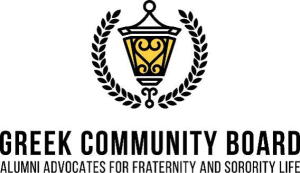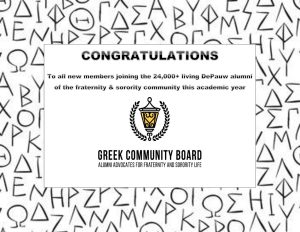It had been a little over a month since she arrived in the United States, and sophomore Vy Truc Nguyen was suddenly tracked down by campus police while talking with her sorority mates in the Union Building. They informed her that her parents in Ho Chi Minh City, Vietnam, were worried about her safety because she hadn’t answered her phone for their weekly call that night.
This fright, followed by a good laugh, encapsulates many aspects of Nguyen’s life on the other side of the world. Nguyen likes feeling connected to her home and social circle while she’s living at DePauw, but it’s certainly hard to manage phone calls with a 13-hour time difference, and piles of homework. She’s glad to have brought tangible memories with her when they’re needed.
“This is our traditional food,” Nguyen said. On a small coffee table, she presented three types of instant meals. Two were noodles, called Hù Tiêù and Háo Háo. Both of the packets made a crinkling noise followed by a gentle snowfall of seasoning inside the packet when placed on the table.
Nguyen said, “I brought a lot of instant noodles, which takes up a lot of space for the luggage… I had to put most of my clothes back!” The pastel blue and bright red packages were both shrimp flavored noodles, because international flights did not allow her to bring beef or pork. “I literally have to choose every instant noodle with shrimp on it, but not the beef. That’s very sad,” she added. Beef is her favorite flavor.
The third packet was Cháo Cá, an instant fish rice porridge that is commonly eaten when sick in Vietnam. One packet combined with boiling water makes a hearty bowl that Nguyen has always eaten for emotional and physical healing. She’s very grateful for bringing a kettle so she can have boiled water in just a few minutes in her room.
International airlines put strict limits on students’ packing lists. Nguyen is one of many students who have had to pack their life into a suitcase weighing in at 50 kilograms or less, which is a common frustration. This forces students to bring the essentials for living somewhere new, but also the essentials to feel connected to their places of origin.
2020 and 2021 have made traveling on a weight budget even more complex, as the pandemic skews the expectation of international travelers, but especially college students.
Once a week, Nguyen would wear an ao dai, a floor length, pale white dress to school. Vietnamese women are expected to wear it once a week and on special occasions. However, due to the pandemic, Vy didn’t bring an ao dai with her this semester.
“I did think about bringing it. But because it’s COVID-19, I didn’t think international students would have any events. Like previous years, we would hold a lot of events for international students to wear their traditional dresses… because of COVID-19 I didn’t bring it.”
Amerti Guta, a sophomore from Addis Ababa, Ethiopia, had a similar situation when debating to bring cultural clothing.
She showed a picture on her phone of a brown dress with a coat made of small beads. Wrapped around the shoulders, the beaded red, white, and green stripes embraced her body with pride, complemented by matching necklaces and headwear.
“I didn’t bring it because it was really heavy… it’s not easy to store as well. I don’t have, like, a permanent home here, so whenever I’m moving in or out, I’d have to get it in storage. So it’s kind of hard to manage because it has to be kept, hung and all that.”
But most of Guta’s space was taken up by her favorite books, written in several different languages. Her first language, Afaan Oromoo, is the first language she could speak at home, but her Bible is in Amharic, the language she was taught to read and write growing up in the capital city. The Bible is very important to her, and it’s been in her life for many years. The cover was thin leather, and the pages were glossy white, filled with the Amharic symbols.
Some other books she brought were her favorite rereads. One of her favorites is a biography by Aklilu Lemma, an Ethiopian doctor who, in 1964, discovered a treatment for bilharzia, a parasitic disease hosted by snails that was common in Africa, and very lethal.
“He found a holistic medication for it out of a leaf called endod. So, the book is about the journey how he found it. The way he found the medication is like, he saw women using that leaf to wash their clothes, and in the places where they dispose the water, the snails were dead,” Guta said. With that discovery, he was able to make a medication to treat the parasitic disease that had a deadly grip on several African countries, Ethiopia included.
She also uses chemistry and math textbooks because, although they’re written in the same language as American textbooks, the structure is easier for her to understand. They’re helpful for her biochemistry major and any STEM classes she may take.
“[The Ethiopian] book has, like, very short notes, and then most of it is questions. So just very short notes and then your practice questions,” she said. “But here, I guess the books have longer notes, and then exercise questions after reading the notes. I like those because of the background of what you’re learning, but I like [the Ethiopian] ones for practice questions.”
Mixing and matching the textbooks she used in high school with the textbooks she uses from DePauw courses is the perfect curation of methods Guta knew before DePauw, and methods she learns today.
“I’m really close to my jewelry, so I brought the entire box,” Zartasha Mushtaq said while she held a small, blue and white striped vinyl pouch. She unzipped the top, and pulled out half-spheres made of dense metal, etched with symmetrical patterns and were heavy with memory. From the bottom of the little hemispheres, brightly colored beads hung from wire, adding a pop of color and movement when she walked while wearing them. At the top was a large hook made of gold. These are traditional Pakistani earrings called jhumkas (joom-kuss).
Although every woman in Pakistan will own a pair or two of jhumkas, Mushtaq tries to buy a pair wherever she travels, whether in Lahore, Karachi, Islamabad, or wherever she finds a culturally rich market in Pakistan.
Jhumkas can be found just about anywhere, but different cities will have different sizes, colors, and designs.
30 kilograms of tangible objects, history, culture, and the weight of her life packed into a suitcase, Mushtaq departed from Islamabad, Pakistan to attend college in America. Mushtaq believes there was tangible, emotional, and historical weight that was taken into account while she was preparing to leave home.
She gently pulled out a black anklet that lightly jingled when it came out of the bag. Anklets are popular too, and have a long history.
“It was very long ago, a subcontinent thing. Men kept tabs on women, so they wanted to know where they were. So, if a woman was going out of the house, these had a lot of bells… when they’d step out of the house, the men would know. Bunch of assholes,” she said.
Mushtaq is enthusiastic about sharing her culture, but there are personal items that were very important for her to bring on her journey to the U.S.
On the floor of her single dorm room, Mushtaq’s prayer mat is angled toward the city of Mecca. It’s bright yellow with a blue and red mosque on the top half, with red designs around the sides, a yellow fringe on both ends, and some discoloration in spots where it’s touched the most.
Before she left, Mushtaq’s mom offered her a red, blue, or yellow prayer mat. “She gave me the yellow one, and she said, ‘I think you should take this. The color yellow is how I want you to be there’… yellow is always related to happiness, you know, and bright,” she said.
Traditionally, Muslims will pray five times a day. Mushtaq’s relationship with God is very important to her. Although she prays as needed, not always five times per day, the prayer mat reminds her of home and keeps her connected to God and herself.
The weight limits on planes are frustrating, confusing, and unfair for Mushtaq and many other international students. Still, their travel stories and tangible memories seem to help with the distance.
“There’s a famous saying in Urdu, ‘for you to reach somewhere, you’ve got to leave a place behind,’” Mushtaq said.


